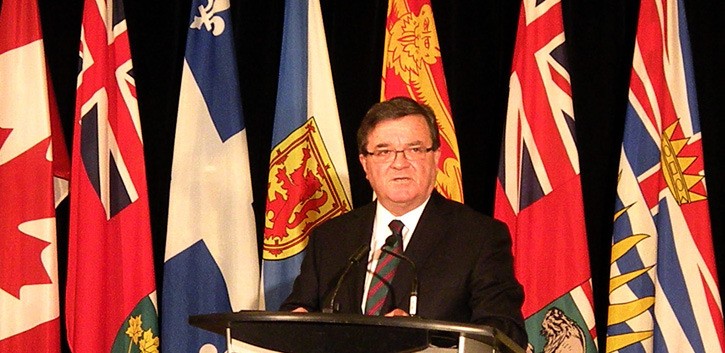The federal budget document began with an ominous warning about deep cuts. Social programs, justice and corrections would be spared as much as possible, but no department would escape the knife.
The stark truth was revealed in a table of figures. Health care spending, the core of the Canadian state, was cut by 3.8 per cent in just the first year of the fiscal plan, as population and need continued to grow.

No, this is not from the Stephen Harper budget of April 2015, or any other in the last decade. It’s from the Jean Chretien budget of 1995, more than 20 years ago. That’s the last time anyone actually cut health care spending.
But wait, you may say. Didn’t I hear that Harper has slashed health care spending by $30 billion? Yes, you probably did hear the biggest, most brazen lie of this election campaign, either from the government unions that advertised it or the politicians who parrot it.
If health care really is everyone’s high-priority issue, as pollsters have long assured us, voters should at least know the facts.
After cutting provincial health and social services transfers for years to end the string of operating deficits that began under Pierre Trudeau and continued under Brian Mulroney, Liberal finance minister Paul Martin rose briefly to the top job.
In 2004, Martin staged meetings with premiers, emerging with what was billed as “a fix for a generation,” with federal health transfers to rise six per cent each year into the future.
The future for Martin’s government lasted only two years, as his minority was replaced with one led by Harper.
These galloping increases continued until the Conservative majority of 2011, after which then-finance minister Jim Flaherty came to Victoria to inform provincial finance ministers of the new plan. (I was there, and the joke was that this was as far from Ottawa as Flaherty could get without leaving Canada.)
The six-per-cent increases, by that time triple inflation, would continue for another five years. Starting in 2017-18, increases would be tied to economic growth, with a minimum hike of three per cent, still well ahead of today’s inflation. That remains the Conservative plan today.
All provinces east of Saskatchewan pitched a fit. Manitoba’s NDP finance minister termed it “un-Canadian.” Lefties immediately called it a cut, to which Flaherty replied that transfers to provinces would rise from $30 billion to $38 billion in 2018-19, and continue to grow after that.
In B.C., then-finance minister Kevin Falcon praised the long-term approach, acknowledging that health spending was ballooning to half of the provincial budget and had to be brought under control as baby boomers start to retire. B.C. has largely accomplished that, with spending increases below three per cent and health care outcomes that continue to lead the country.
As the current election campaign turns into the home stretch, Statistics Canada has announced a milestone. For the first time in history, the number of seniors exceeds number of children. This demographic shift is inexorable, predictable and must be addressed by whoever wins the Oct. 19 federal election.
NDP leader Thomas Mulcair is on record that he will scrap the Conservative formula for growth-based increases that he pretends are cuts, returning to six per cent every year while balancing the budget. Little detail has been provided on how this would be done.
Liberal leader Justin Trudeau announced in Surrey last week that he will ante up an extra $3 billion over four years for health care, and “sit down with the provinces immediately” to renegotiate, a rerun of Paul Martin’s political theatre.
Tom Fletcher is legislature reporter and columnist for Black Press. Twitter: @tomfletcherbc
